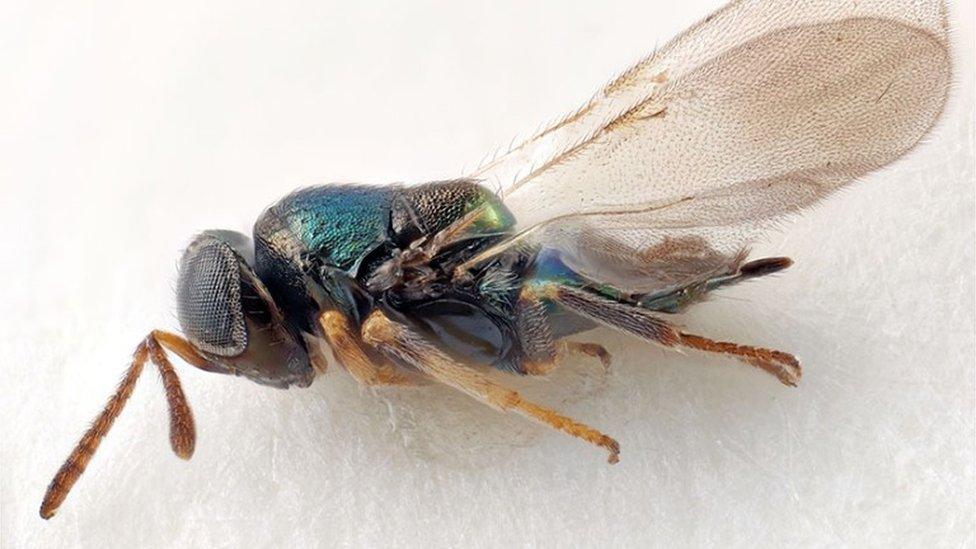New wasp species named after Doctor Who Daleks
- Published
- comments

A Dalek nationi wasp, named after Terry Nation, the screenwriter who first created the monsters
Fourteen newly discovered species of wasps have been named after the Daleks from Doctor Who.
The insects were given the name by London's Natural History Museum to mark the show's 60th anniversary.
The museum's scientific associate Dr John Noyes, said: "I thought it was a good name for a genus and a bit of fun having been a big fan of Doctor Who in my early years."
The wasps are among 815 new species described by the Natural History Museum in 2023, including a fungus named after Peter Rabbit author Beatrix Potter, a stick insect found on a bin, and a giant penguin.
The giant penguin Kumimanu fordycei lived about 60-million-years-ago
This year scientists at the Natural History Museum have been busy documenting a whole range of new species.
From ancient dinosaurs to worms at the bottom of the ocean, scientists and associates described a record-breaking number of species new to science - 815 in total!
Highlights from the year include a new dinosaur found on the Isle of Wight, which was the first discovered on the island for 142 years, and the fossil of a giant penguin uncovered on a New Zealand beach.
Named Kumimanu fordycei, the bird weighed an estimated 150 kilograms and dates back more than 50-million-years.
A thick-tailed gecko, from Namibe Province, Angola, was also discovered in 2023
Also discovered in 2023 was a 407-million-year-old parasitic fungus named after author Beatrix Potter.
Potteromyces asteroxylicola was discovered infecting the roots of ancient plants and is thought to be the earliest disease-causing fungus ever found.
It honours the Peter Rabbit writer's reputation as a mycologist - someone who studies fungi.
A stick insect on the side of a bin in Australia, called Tachystola mulliganae, was found by a lifelong moth enthusiast and hailed by the museum as a "real coup for citizen science".
The Museum said: "With species around the world going extinct at an increasingly concerning rate, it is vitally important that we continue to describe as many new species as possible so that we have a record of the intricate web of life on this planet."
- Published15 December 2023
- Published23 November 2023
- Published10 October 2023
